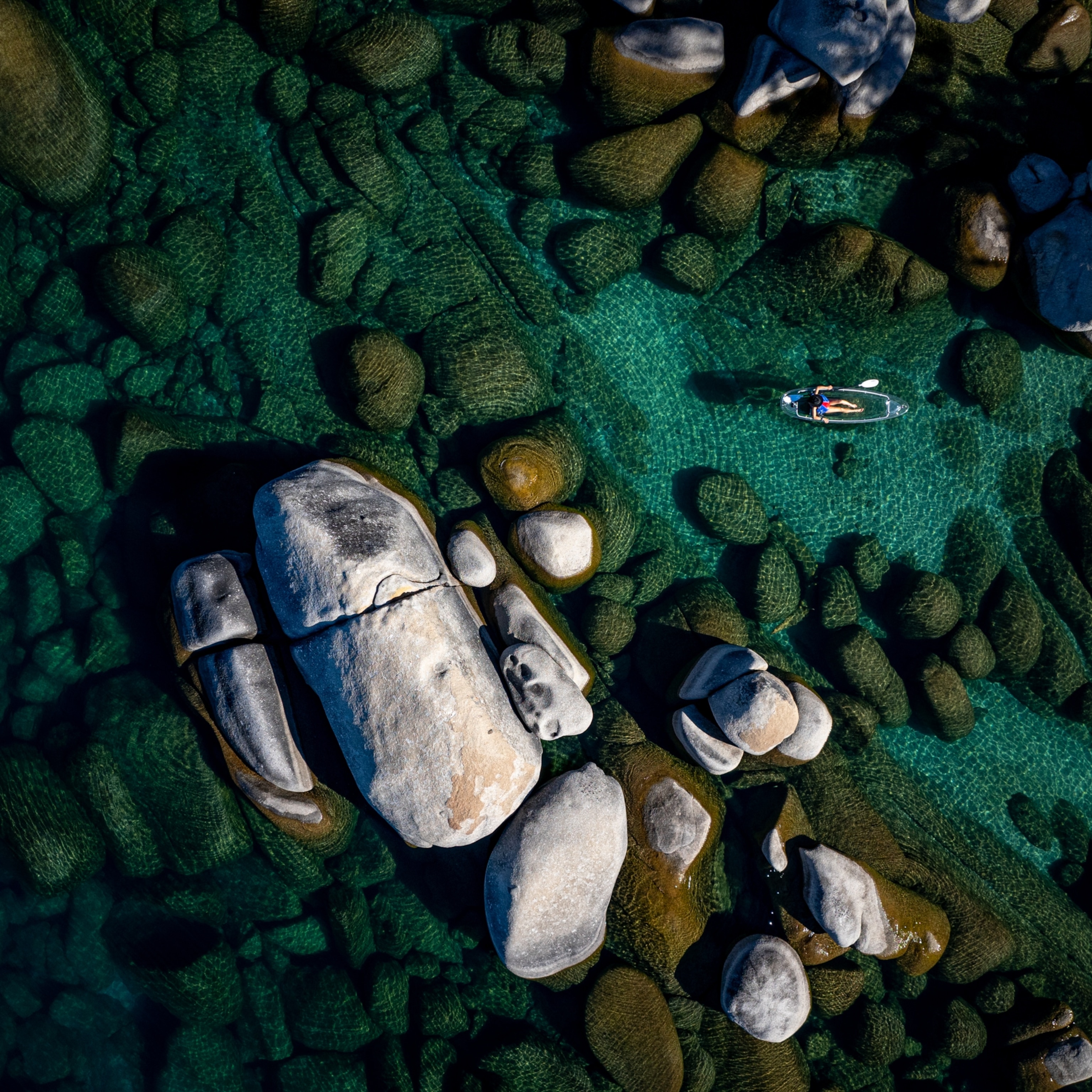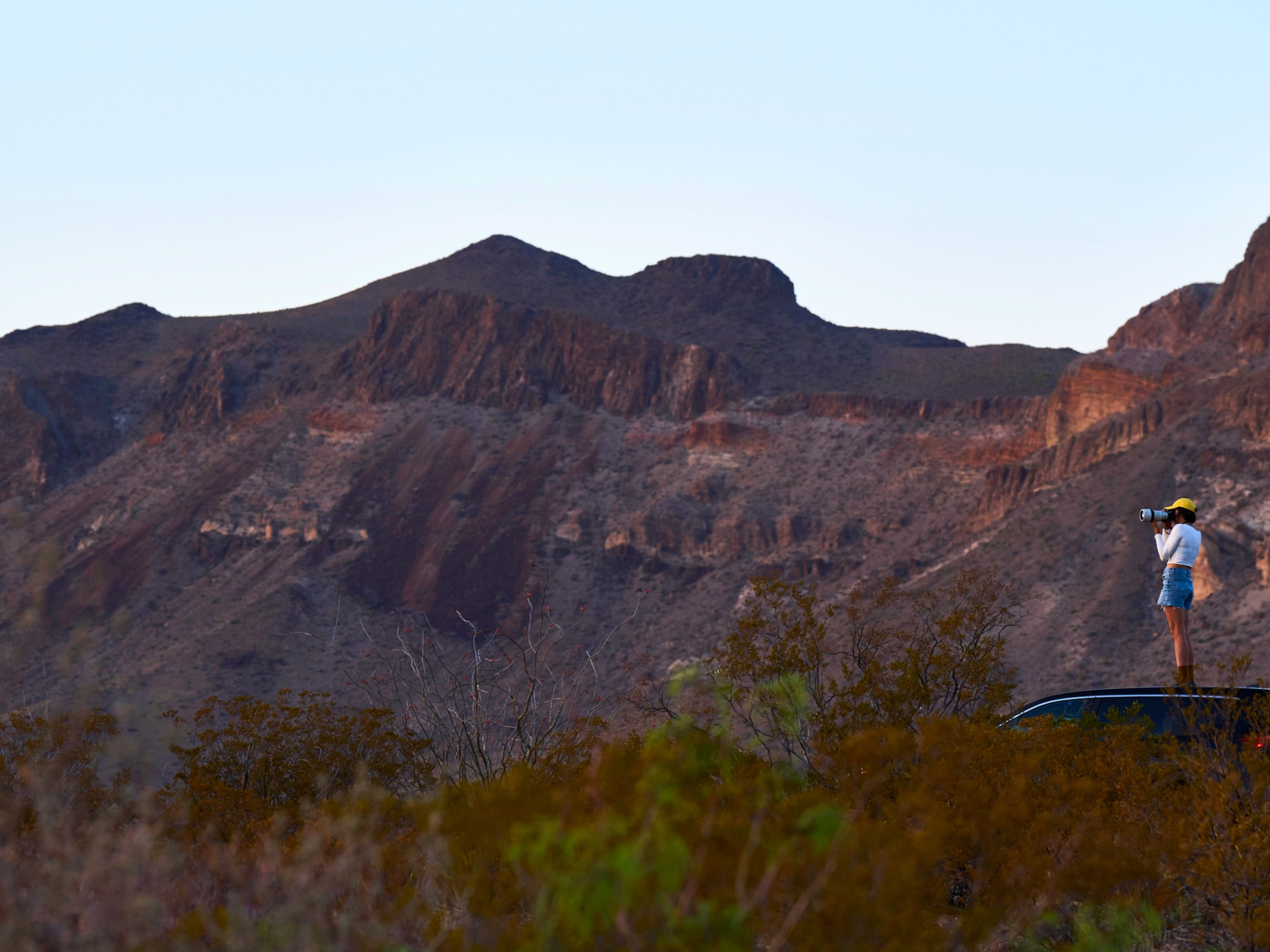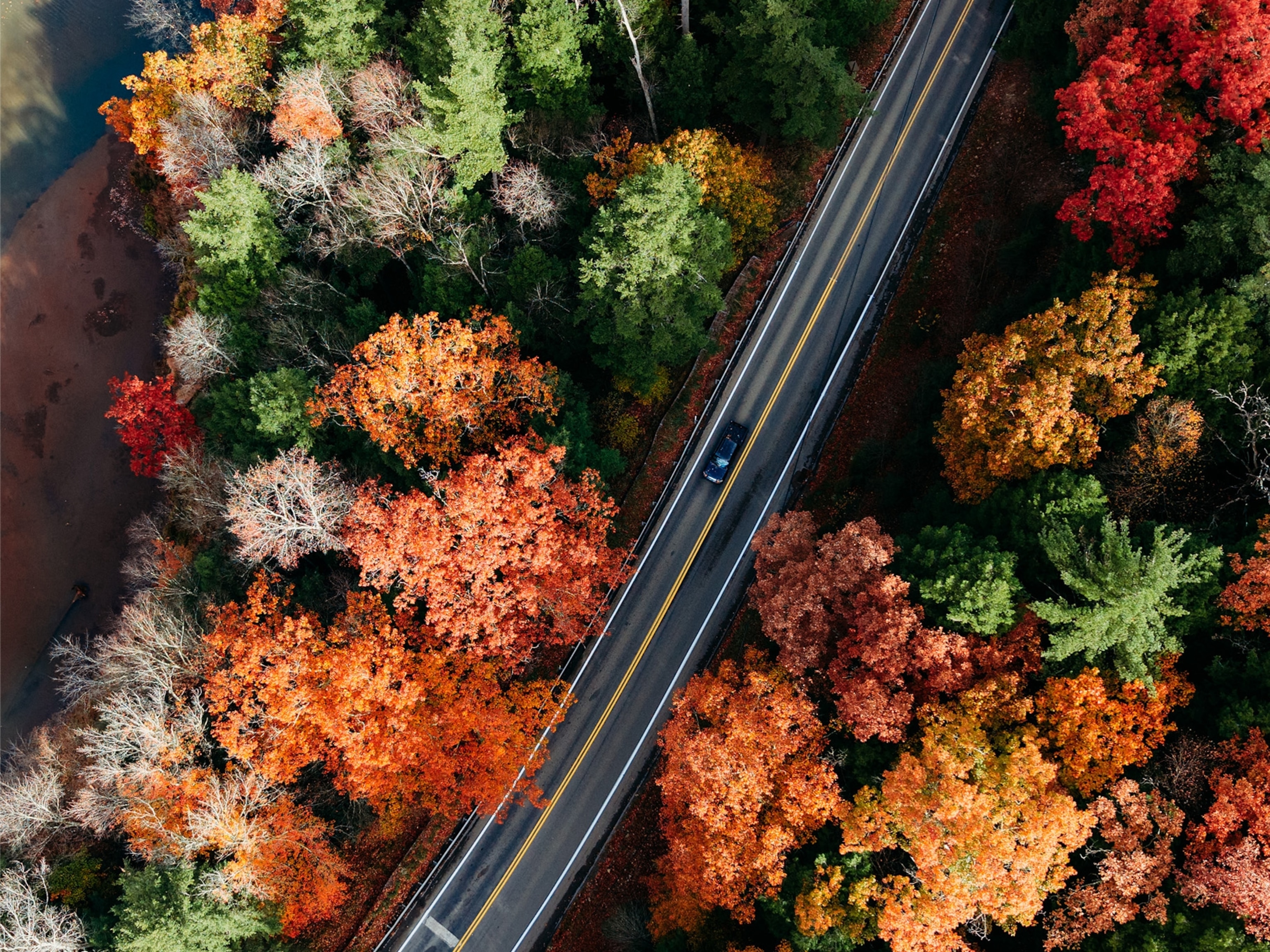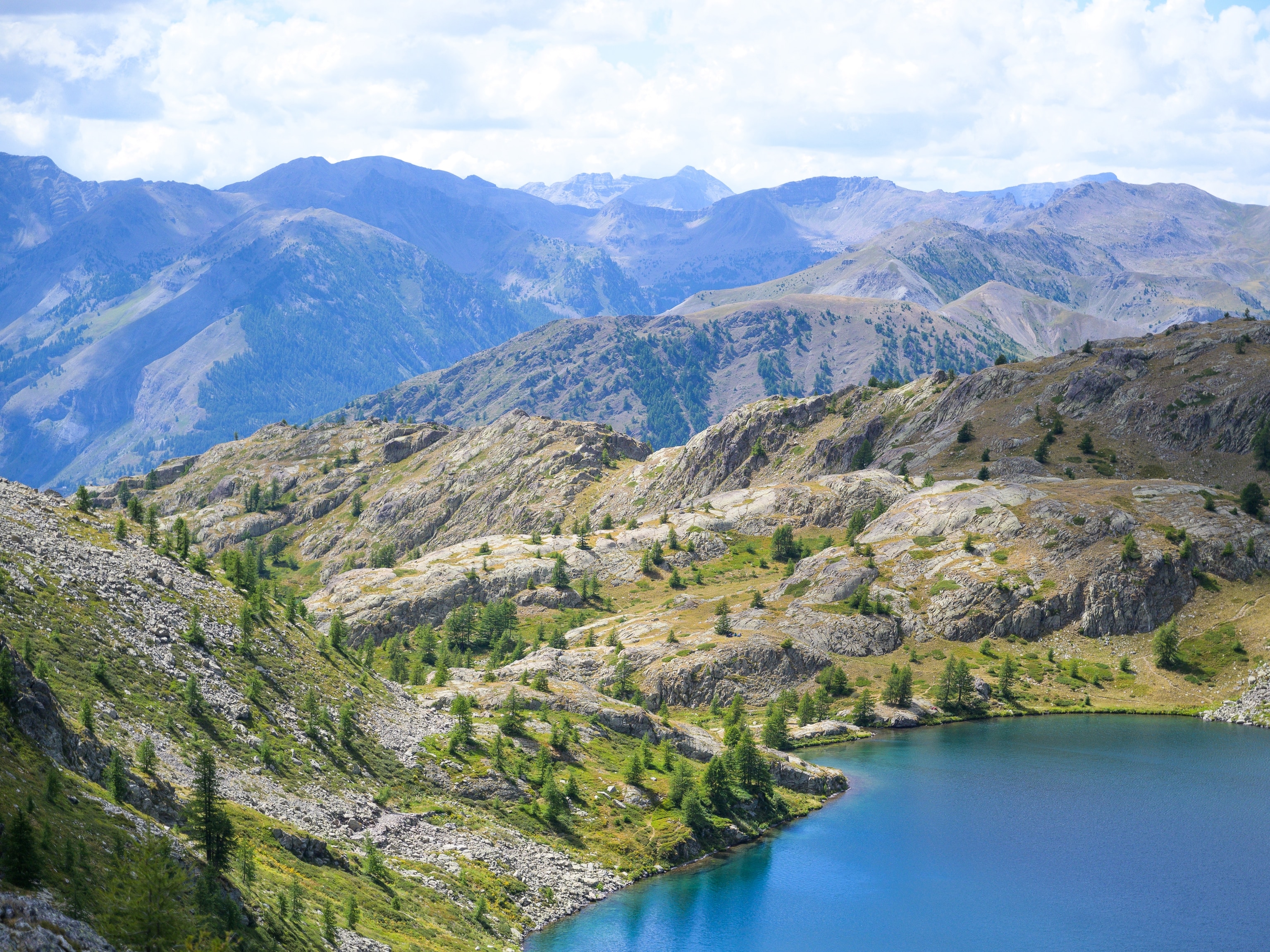
Wilderness Wars
A new generation of mountain bikers and paddlers is challenging how we explore and protect wild places.
On a spring day in 1986, three kayakers appeared in Yellowstone National Park, moving along the fast-rippling water of the Yellowstone River. A helicopter approached and they stubbornly stayed their course as it dropped low for a better look, buffeting them with rotor wind. An armed man in a ranger uniform appeared on shore ahead, waiting. The paddlers passed unconcerned, refusing to heed the orders to stop, and continued downriver. An out-of-breath ranger finally caught them at a portage in the Black Canyon of the Yellowstone, only five miles from the park’s northern boundary. Before busting them, the ranger wanted to hear about their run.
The Black Canyon is considered one of the finest white-water runs in America, or at least it would be if paddling it were legal. On all of Yellowstone’s rivers (except for a one-mile channel between two popular lakes), paddling has been banned since 1950, a measure meant to protect against overfishing, a serious problem at the time. Today, paddlers with no interest in catching fish argue the ban was never intended to restrict them. They’ve been trying to overturn it—the only blanket ban on river paddling in an American national park—since that not-so-clandestine run 30 years ago.
Concerned paddlers in the American Packrafting Association have produced federal legislation, the Yellowstone and Grand Teton Paddling Act, which would mandate the two neighboring parks develop a plan for approving paddling on 429 of their 7,000 miles of river.
But some see paddling in Yellowstone as a desecration of one of America’s last wild places.
Jack Turner, a longtime Exum climbing guide, alpinist, and author of The Abstract Wild, a call-to-arms for preserving pristine wilderness, told Todd Wilkinson, columnist for the Jackson Hole News and Guide, that he felt betrayed by some paddlers he’d mentored. They weren’t conservationists, Turner said; “they are just jocks.”
Veteran wilderness advocate Howie Wolke, the fiery co-founder of EarthFirst!, told Wilkinson that paddlers seeking access to Yellowstone, “are conservationists like I’m the Pope. Real conservation is about humility…[they] should rename whatever organization they have as Me First.”
Now mountain bikers are joining the fray. Cyclists have been frustrated by decades of exclusion from federally designated “wilderness areas,” where bicycles are uniformly banned. A group of bike advocates, the Sustainable Trails Coalition, recently penned its own legislation, the Human-Powered Travel in Wilderness Areas Act, introduced in the Senate’s Committee on Energy and Natural Resources on July 13, 2016. Like the Yellowstone act, its proponents say it’s an effort by a new generation of adventure sportspeople to remove a long-standing ban they see as unjust.
A coalition of 115 grassroots wilderness groups released a statement in March opposing the effort. “At a time when wilderness and wildlife are under increasing pressures from increasing populations, growing mechanization, and a rapidly changing climate, the last thing wilderness needs is to be invaded by mountain bikes and other machines,” wrote George Nickas, executive director of Wilderness Watch, a national organization dedicated to the preservation and stewardship of wilderness areas, in a statement.
A Deep Rift
The two debates are flash points of a philosophical and generational clash that’s exposing deep rifts in the outdoor community. On one side are traditional environmentalists, generally older Americans who seek to protect the natural world from humanity’s ever increasing impact, but who also enjoy hiking, canoeing, and cross-country skiing. On the other side are new-school adventurers who probably enjoy hiking but can also be found chasing adrenaline while mountain biking, paddling, climbing, trail running, and backcountry skiing wild mountains.
Both groups insist they love nature, but they differ on the ways they experience it. Now two of the conservation movement’s crown jewels—Yellowstone, the world’s first national park, and American wilderness areas, some of the most protected landscapes on Earth—are being challenged before Congress by the very muscle-powered recreationists they were created for.
At a time when humanity’s impact on the natural world has never been greater, this raises an uncomfortable question: Has recreation become the enemy of conservation?
The Challenges
For a century, the environmental movement in America has fought for the protection of our most beloved landscapes. Their enemies have been clearly defined—developers, loggers, miners, and motorized user groups; all those who would despoil or tread heavy on the land. But now, a younger generation of quiet, muscle-powered recreationists are enjoying these now protected landscapes in new, often faster ways. They are figurative and sometimes literal descendants of the environmental champions they’re succeeding, but it is not a peaceful transfer of power.
Nowhere is this clearer than in the debate over mountain bikes in federally designated wilderness areas. The Wilderness Act of 1964 declared wilderness to be “an area where the earth and its community of life are untrammeled by man, where man himself is a visitor who does not remain.” The strongest form of land protection in the U.S., wilderness is designated by Congress and can exist within national parks, national forests, and other federal public lands. Within its boundaries all structures, roads, and motorized uses are banned.
The 115 organizations that signed on to the Wilderness Watch’s open letter in March claim that the Wilderness Act meant to ban all mechanized transportation methods in wilderness—even those, like mountain bikes, that had not yet been invented at the time of the 1964 legislation.
The U.S. Forest Service outlawed mountain bikes explicitly in its wilderness in 1984 and all other land management agencies followed suit. Today, wilderness areas exist as quiet, primitive bastions where not even chain saws are allowed for clearing trails. To some, they are holy places.
Many mountain bikers see the situation differently. They say that, for decades, the conservation community has ignored their interests as each new wilderness designated—279 since 1990—locked them out of trails they’d been enjoying for years. In some wilderness-rich areas, like Montana, it has become increasingly difficult to find legal backcountry riding opportunities. The Human-Powered Travel in Wilderness Areas Act, if passed by Congress and signed into law by the president, would grant local land managers the discretion to open trails they deem suitable for bikes in wilderness.
Packrafters and paddlers report similar frustration and legislative solutions. In Yellowstone, the pro-wilderness American Packrafting Association is the central force behind the Yellowstone and Grand Teton Paddling Act. Packrafts are lightweight, one-person inflatable boats that can be rolled up to the size of a small tent for transport. People who use them are essentially adventurous backpackers who combine paddling wild waterways with their backcountry hikes. They seek the kind of low-impact paddling experience—i.e., no boat ramps or commercial use—that would seem at home in a national park (and is at home in every other national park).
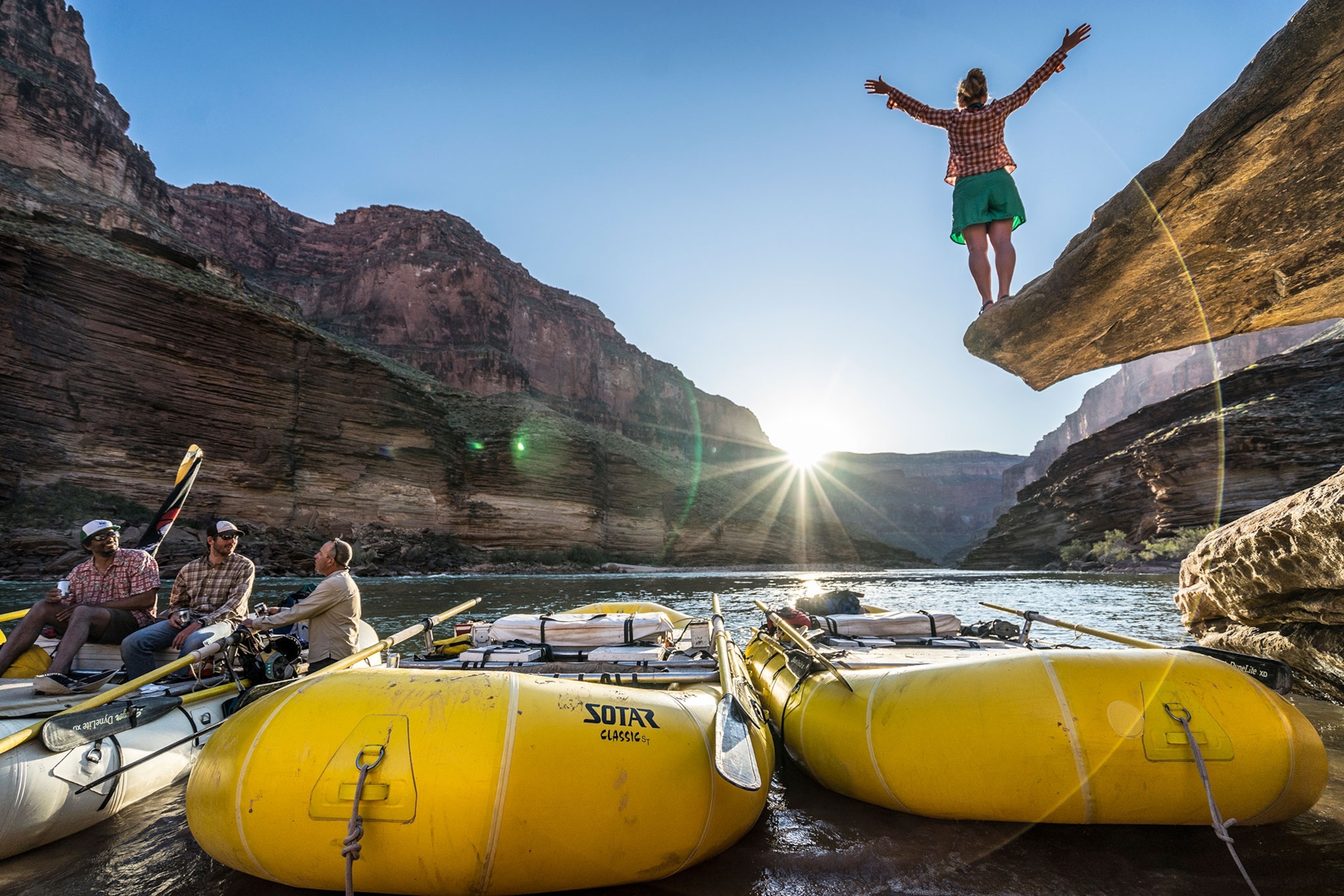
Yellowstone’s leading environmental organizations, including the Greater Yellowstone Coalition and the National Parks Conservation Association, adamantly oppose packrafting in the park. In an editorial in the Bozeman Daily Chronicle, GYC executive director Caroline Byrd wrote that packrafters in the park would “lead to significant user conflicts, more unsanctioned trails in the backcountry and fewer places of refuge for Yellowstone’s iconic wildlife.”
Valid Concerns
In recent years, scientists have found numerous instances of the negative impact recreation has on the natural world. Backcountry skiing is booming, but biologists warn it may displace bighorn sheep and denning wolverines. Rock climbers passing too close to nests have caused the death of peregrine falcon nestlings in Yosemite.
And it turns out hikers have a surprisingly large impact, too. A California study found nature preserves where hiking was allowed showed five times less evidence of bobcats and coyotes than comparable preserves with no public access. Other studies have found that moose and other ungulates exhibit disturbed behavior for hours after cross-country skiers pass by. Those skiers could potentially bother wildlife more than snowmobiles because they spend more time in the animals’ habitats. Even birders and canoeists can decrease the reproductive success of loons and other birds by disturbing nesting sites.
No matter how they conduct themselves, humans have an impact on the natural world.
The Paradox
All who love nature are facing a paradox. Wilderness must be preserved, expanded even, which requires instilling a love of nature in this generation and the next. But that can only happen if people actually spend time in wilderness, which can further degrade already imperiled ecosystems. That raises the critical question: How do we protect natural areas while placing the fewest possible barriers to people wanting to experience them?
Accomplishing that will require more science, respectful dialogue, and creative problem solving. The best available science indicates the ecological impact of mountain bikers is similar to hikers. While grizzly bears can be problematic due to the quiet speed of bikes, other species may actually be less impacted by bikes due to riders’ predictable routes and less time spent on the trails compared to hikers. Cyclists are also less likely to camp overnight, resulting in a large decrease in backcountry impact.
“We couldn’t prove mountain bikers had more impact [than hikers] on soil or wildlife,” says Alan Watson, a research scientist at the Aldo Leopold Wilderness Research Institute, who conducted some of the first studies on bike impacts. Studies since Watson’s have backed up his findings, though further research is needed.
There are valid concerns about how paddling could affect the habitat security of sensitive wildlife like grizzlies and endangered harlequin ducks. Fewer studies have analyzed the effects of packrafting and paddling, but naturally, they would have an impact in Yellowstone. Packrafters insist they only want the National Park Service to consider hike-in access to 5 percent of the park’s waterways. The Park Service has refused, citing habitat disturbance and the risk of watercraft transferring invasive aquatic species.
“There may be no other scenic resource like this in the United States, and possibly the world, where visitors can experience large intact river systems and their environments in a wild, ecologically pristine state,” said Jonathan Jarvis, National Park Service director, in a statement opposing the paddling act.
Where's the Line?
Yellowstone’s managers have the unenviable task of protecting the park’s profusion of natural wonders from a growing number of visitors (a record-breaking four million in 2015). Often cited as the most intact ecosystem in the lower 48, the park’s backcountry remains a wild, fecund place. Yellowstone is also a place where we have a long history of developing nature to suit our needs. We’ve introduced non-native fish to “improve” sport fishing, with disastrous effects to aquatic ecosystems. We’ve rigged metal stairways and viewing platforms down the cliffs of the Grand Canyon of the Yellowstone. We’ve built 466 miles of roads, more than 900 miles of trail webbing the backcountry, multiple lodges crowding Old Faithful, and more than 1,500 buildings, including a hotel directly on the shore of Yellowstone Lake, where marinas and motorboats have free rein.
In short, we’ve created a drive-through wilderness replete with gas stations, traffic jams, and tour buses disgorging wildlife-harassing tourists. Some argue that paddling, in comparison, is harmless.
“As an ecologist, I can’t see how packrafting will lead to any measurable decline in any species,” says Roman Dial, a pioneering Alaskan biologist, board member of the American Packrafting Association, and author of Packrafting! An Introduction and How-To Guide. “To say otherwise is simply an emotional ploy to maintain status quo for the current user groups who’d rather not share what is ultimately public land.”
He suggests that no one is telling the fishermen who line the park’s riverbanks, or the hikers who clog its hiking trails, that their presence is a problem. Mountain bikers could make similar complaints about wilderness areas, where commercial horse outfitters with laden pack trains deeply erode trails, spread invasive plant species, and heavily impact backcountry campsites.
By turning its back on non-motorized user groups who share their passion for the natural world, Dial says the conservation community risks alienating a growing base of potential supporters.
“Instead of expending their emotional energy flinging mud at fellow conservationists, maybe they should work on real threats to national parks,” Dial says. “The anti-packrafting crowd sounds like they’d rather keep their church interiors immaculate and ignore the fires burning around it.”
What's Really Going On?
If, as the scientific research suggests, the new generation of adventure sport enthusiasts have comparable impacts to other muscle-powered forms of recreation, perhaps the debate is about more than just cold hard facts.
Watson calls the friction between recreationists and conservationists “goal interference.” For instance, hikers seeking a contemplative, primitive experience don’t want to encounter, or even see evidence of, mountain bikers in wilderness areas. Their experience is more enjoyable when they’re not worrying about bikes flying around the corner, Watson says.
“If you’re walking a trail with binoculars looking at a bird and some jackass comes down the trail at 20 miles an hour in full body armor, that doesn't have to happen too many times before you start resenting mountain bikers,” says Brady Robinson, an avid backcountry mountain biker and executive director of the climbing advocacy group the Access Fund.
Robinson argues that bikers have more in common with the purists than the latter may realize. Backcountry mountain bikers heading deep into wild mountains are compass-carrying, self-sufficient types, earning every mile with sweat and carrying provisions, maps, and emergency supplies on their backs. They’re more akin to hikers than the adrenaline fiends going too fast on near-town trails.
In addition, faster trail users disrupt the contemplative environment, especially the reverie of those on foot. In federally designated wilderness areas, places where people go for primitive experiences and solitude, the affect can be jarring. Bicycles in the forest remind us what we’re trying to escape.
“To stand there without our contraptions and all of the technologies of modern life, and just realize that we’re part of this much greater whole that’s bigger than us, is the best and highest value of wilderness,” Nickas of Wilderness Watch told National Geographic. “We can overrun all wildernesses if we want, but we’ve chosen not to. Building that sense of restraint and respect, having the human species develop that, is essential to the preservation of the world.”
That feeling of wild remoteness and the humility it engenders is valuable and worth protecting. Recreation advocates say that people on bikes, boats, ropes, and skis should be able to have it, too.
For packrafters in Yellowstone, their goal interference is less immediate. Scenery-loving tourists simply don’t want to gaze across the idyllic sprawl of Yellowstone’s Hayden Valley and see a river bespeckled by paddlers in brightly colored boats. What they imagine to be an inspiring remnant of primordial wilderness suddenly feels like a playground. It’s a question of aesthetics, which occasionally veers into irony.
- National Geographic Expeditions
“It’s ironic that people sitting in their Winnebago don't want to look at somebody paddling a river,” says backcountry adventurer Forrest McCarthy, a guide, conservationist, and board member of the American Packrafting Association.
Dial agrees. “What I see is a bunch of old-time park users in Yellowstone who’d rather not share, whose own park use is no less wildlife-displacing than packrafting ... [who are] busy coming up with reasons to keep packrafts out for what are essentially emotional reasons, not sound scientific ones.”
Outdoor Gymnasiums?
A common refrain from critics is that adventure sportspeople treat nature like a gym and move too fast to properly appreciate it. Some claim sport enthusiasts treat national parks like a personal conquest.
“I am extremely disappointed in the overall selfish message from the mountain-biking community that seems to believe that all public lands are nothing more than a playground or outdoor gymnasium for their self-gratification,” wrote George Wuerthner, wilderness photographer, author, and ecological projects director for the Foundation for Deep Ecology, in an editorial in the Idaho Mountain Express.
McCarthy, a former Exum mountain guide and organizer for the Wyoming Wilderness Association who has packrafted wilderness rivers around the world, disagrees with this view. “Skiing a mountain or floating a river is not about conquering it,” he says. “It teaches you incredible humility and admiration for these landscapes. You could be the biggest, the strongest, the best, and it could still kill you if you’re not thoughtful and respectful.”
It’s true that mountain bikers and packrafters experience nature differently than a hiker does. Their concentration on trails and rivers can make them less likely to notice the beautiful subtleties of a butterfly or blossom. But paddlers are immersed in hydrological cycles and develop an almost primal connection with the flow of water across the landscape. The mountain biker experiences the land’s undulations and shifting ecosystems—sights, smells, sounds—as they move through them. The backcountry skier develops an intimate relationship with weather cycles, the subtleties of mountain topography, and the effect of the sun and wind on differing aspects of the land. All of them are out there watching the days change length, the wildlife and vegetation adapt with the seasons, and, over time, developing a deep understanding that they are animals among many on a still wild planet.
To Know the Wild
Adventure sportspeople say they can’t help but be environmentalists. “Have you ever talked to an alpinist that doesn’t believe in climate change?” asks McCarthy.
Some people love to hike into wilderness. Others are content just knowing it’s there. But some of us crave a more dynamic relationship. In days long past, when humans routinely made decisions with their lives in the balance, they relied on skill and cunning to survive.
“All humans have these abilities,” says Dial, whose multiweek traverses of trailless Alaskan wilderness on foot, bike, and packraft are legend. “But when you live in an urban environment, you don’t get the chance to find out what you have inside you as a human animal.”
Adventure sportspeople say they are simply reconnecting with the elemental rewards and ancient joys of testing themselves in Earth’s wild theater. Like Bob Marshall, a grandfather of the wilderness movement, who found inspiration in 50-mile hikes. Or John Muir, founder of the Sierra Club and an ultralight peakbagger who routinely pushed his physical limits in search of adventure and a closer relationship with the wild.
“If you take a look at all the great conservationists in our country, you can trace it back to intense experiences those people had in the backcountry,” says Robinson, who’s also a board member of the Outdoor Alliance, an organization dedicated to wedding recreation to conservation.
Sportspeople continue their tradition today when they explore the landscape, and themselves, and find that they still have strength, skill, and a home in the natural world.
Take it from groundbreaking wildlife biologist and president of The Wilderness Society Olaus Murie, a key figure in the expansion of Grand Teton National Park, the creation of the Arctic National Wildlife Refuge, and a champion of keeping national parks wild. Murie headed deep into the backcountry and canoed the Yellowstone River with his two sons in the 1930s. In his book Wapiti Wilderness, he wrote about the trip and noted that simply crossing or camping beside a creek was pleasant, but, “to know a stream you travel on it, struggle with it, live with it hour by hour and day by day.”
Today, Murie wouldn’t be allowed to repeat that trip—at least not without a helicopter escort.
